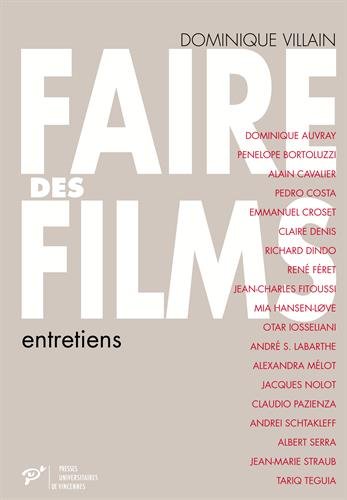Cut to:
The Seventeen Editors
The seventeen editors are profiled below, in alphabetical order, with whatever Rouch film titles I could find credited to them. They might have done numerous others: many of the films have no on-screen crew credits, nor are those listed in the books or websites devoted to his work.
I found screen credits for all but one of the editors which you can see on the next page. Whenever more than one woman (or a man) is listed, I’ve named them all as co-editors because there isn’t enough information about who did what; even when one woman’s name is larger on screen than the others, I still list her as a co-editor for simplicity’s sake.
These aren’t lengthy biographies (and in some cases, that wouldn’t have been possible because there’s so little information about them online) but it’s worth noting that most of them had massive careers before, during or after the time they worked with Rouch (for example, editing multiple films for Louis Malle, Jean-Luc Godard, Jacques Tati, Francois Truffaut, Jacqueline Audry, Éric Rohmer and Jean Renoir, and a few of them wrote books and essays about editing).
When a photograph of them exists, I’ve included one. If you ever find a picture of any of the missing ones, please send it along!
Finally, each editor has an entry in Appendix A.
NÉNA BARATIER
Dates unknown
Chronique d’un été—Chronicle of a Summer (co-editor) (1960)
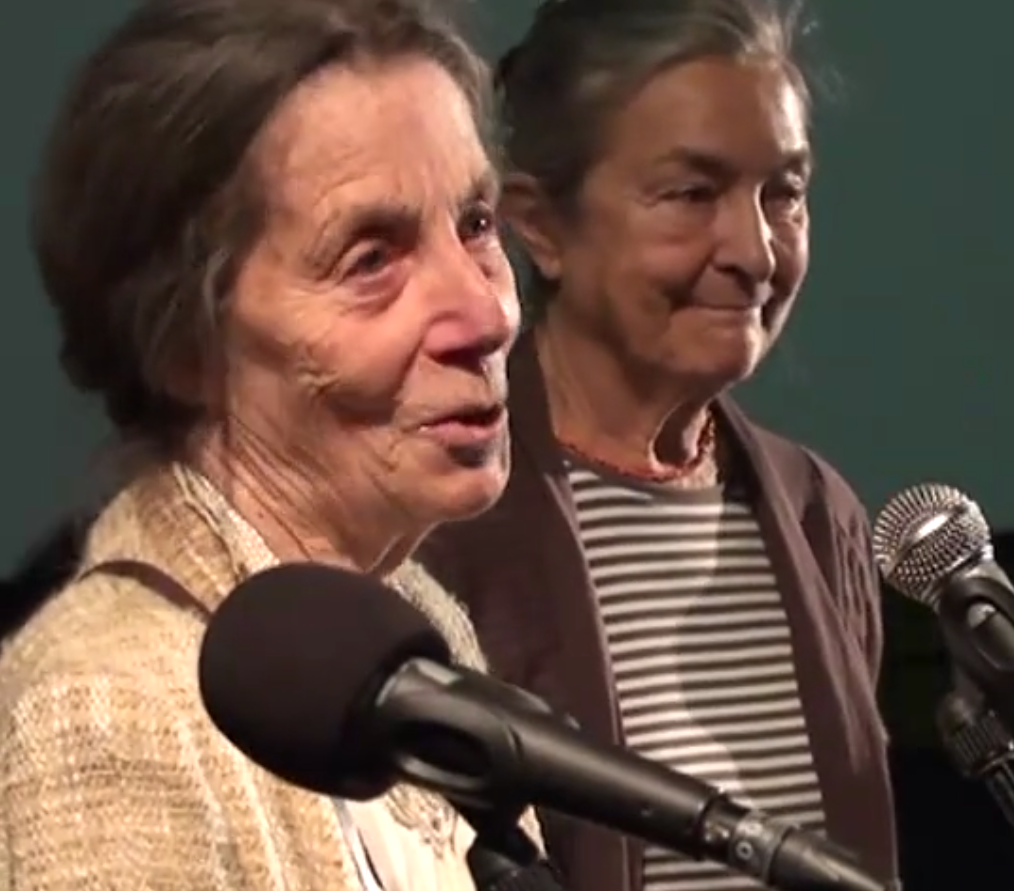 Néna Baratier worked as a co-editor (with Jean Ravel and Françoise Collin) on the landmark film Chronique d’un été, co-directed by Jean Rouch and Edgar Morin. This was her only time working with Rouch, but since 1953 she has been active as a director, co-director, writer, actress and editor on numerous films.
Néna Baratier worked as a co-editor (with Jean Ravel and Françoise Collin) on the landmark film Chronique d’un été, co-directed by Jean Rouch and Edgar Morin. This was her only time working with Rouch, but since 1953 she has been active as a director, co-director, writer, actress and editor on numerous films.
Baratier directed the documentary Sarcelles, 1997 après J.-C….. and was co-director (with her husband, the director Jacques Baratier) of two documentaries about children in Africa (The Cradle of Humankind and African Childhood). She collaborated often with her husband, editing the majority of his films, both the narratives (Sweet and Sour, Prologue, L’or du duc, La ville-bidon and La Poupee) and the documentaries (La Cité du midi, Désordre, Opération Séduction, Èves Futures and Chevaliers de Ménilmontant). She also edited films for other directors, including Martin-Pierre Hubrecht, Étienne Lalou, José Bénazéraf and Jean-Daniel Pollet.
As a writer, Baratier has credits on Le Repas des ancêtres by Jacques Deschamps and Main dans le plat by Nouri Bouzid. As an actress, she appeared in L’Ombre des châteaux by Daniel Duval and Chantrapas by Otar Iosseliani. She was the sound editor on Jackie Raynal’s Deux Fois.
And finally, she was one of the signatories on the pro-abortion “Manifesto of the 343 Sluts” written by Simone de Beauvoir in 1971 and published in Le Nouvel Observateur.
SUZANNE BARON
1927-1995
Les Fils de l’eau—The Sons of Water (1953)
Les Maîtres fous—The Mad Masters (1955)
Fête de l’indépendence du Niger—Celebration of the Independence of Niger (co-editor) (1962)
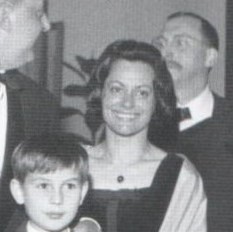 Suzanne Baron is featured on her own page on the website, so you can find further information about her here. But briefly here: in addition to the three films she cut for Rouch, including his most well-known film, Les maîtres fous, she was Louis Malle’s chief editor. Between 1963 and 1984, Baron edited fourteen of his films. She also cut major films for Jacques Tati (Mon Oncle), Margarethe von Trotta (Das Versprechen), Volker Schlöndorff (The Tin Drum) and Werner Herzog (Scream of Stone). In addition, Baron was a student of musique concrete; she composed the score for a film by Joris Ivens, Demain à Nanguila, and also exerted a strong influence on Rouch’s approach to sound.
Suzanne Baron is featured on her own page on the website, so you can find further information about her here. But briefly here: in addition to the three films she cut for Rouch, including his most well-known film, Les maîtres fous, she was Louis Malle’s chief editor. Between 1963 and 1984, Baron edited fourteen of his films. She also cut major films for Jacques Tati (Mon Oncle), Margarethe von Trotta (Das Versprechen), Volker Schlöndorff (The Tin Drum) and Werner Herzog (Scream of Stone). In addition, Baron was a student of musique concrete; she composed the score for a film by Joris Ivens, Demain à Nanguila, and also exerted a strong influence on Rouch’s approach to sound.
“…Much encouraged by this response, Braunberger brought in Suzanne Baron to work on the film. Les Maitres fous is perhaps the most tightly edited of Rouch’s films and features a number of editorial devices that are highly unusual in his work, and which it is tempting therefore to attribute to the influence of Baron. These include particular individual cuts that have given rise to much comment in the literature on this film…What is not in doubt is Baron’s role in improving the sound track of Les Maitres fous. On location, the sound track had been recorded by Rouch’s regular associates, Damouré Zika and Lam Ibrahim Dia, employing a tape recorder that, like his Bell & Howell camera, operated with a clockwork mechanism. Whereas the camera would run for only twenty-five seconds, the tape recorder ran for up to thirty minutes….This recording of live performance in the field was considered very advanced for the time, but the sound quality of the film remains poor by modern standards. Particularly poor was the quality of the sound recorded at the moments when Rouch was actually shooting since he had no sound-proofing for the camera, and the mechanism whirring away sounded like a “coffee-grinder.” In order to overcome this problem, Baron cut out these passages of synchronous sound and replaced them with passages of nonsynchronous wild track recorded either just before or just after any particular shot.”
—From “The Adventure of the Real: Jean Rouch and the Craft of Ethnographic Cinema” by Paul Henley, chapter 13. The full text is available in the Appendix.
GENEVIÈVE BASTID
Dates unknown
La Pyramide humaine—The Human Pyramid (1961) (co-editor)
In addition to her work with Rouch as a co-editor on The Human Pyramid, Geneviève Bastid has three other editing credits (from 1961-1969) for films directed by Maurice Pialat (Janine), Jean-Denis Bonan (Une saison chez les hommes) and Jean-Pierre Bastid (Hallucinations sadiques). Between 1973 and 1980, she directed six short and long documentaries under the name Geneviève Bastide-Neveu (The chiffonniers of the marvelous; We are all stuffed; I want to be a speech therapist; Henri Rousseau, the Douanier; So close, so far. Reunion Place and So close, so far. Montbrison, or childhood found again).
FRANÇOISE BELOUX
1935-2010
Cousin-cousine, pirogue-gondole—Two Cousins-the Canoe and the Gondola (1985)
Enigma (1986)
Folie ordinaire d’une fille de Cham—The ordinary madness of the daughter of Cham (1987)
Boulevards d’Afrique: Bac ou mariage?—Boulevards of Africa: Baccalaureate or Marriage? (1988)
Couleur du temps: Berlin août 1945—Color of Time: Berlin, August 1945 (1988)
Liberté, égalité, fraternité–et puis après?—Liberty, Equality, Fraternity–And Then What? (1990)
Madame L’eau (1992)
Germaine chez elle—Germaine at Home (1994)
Germaine et ses copains—Germaine and Her Pals (1996)
Moi fatigué debout, moi couché—I’m tired of standing, I lie down (1997)
Faire-part: Musée Henri Langlois (1997)
La Maison de Germaine—Germaine’s House (1999)
Le rêve plus fort que la mort—The Dream More Powerful than Death (2002)
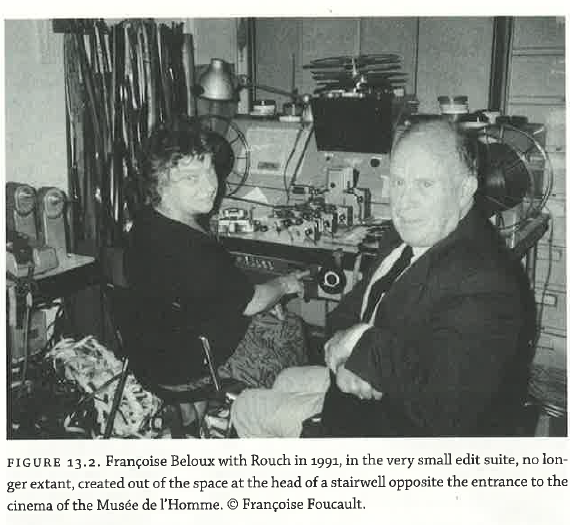 Françoise Beloux (*) trained at the IDHEC (*) and began as an assistant editor on Shoot the Piano Player by François Truffaut (edited by Claudine Bouché and Cécile Decugis). Beloux co-edited the Claude Lanzmann documentary Pourquoi Israël with Ziva Postec and co-edited a short film by Joris Ivens (Le ciel – La terre) with Catherine Dourgnon. Before beginning her work with Rouch, Beloux also edited two films for Ariane Mnouchkine (1789 and Molière), A. Constant by Christine Laurent, as well as The Village Clock, The Cousins of America and Night Brigade, all directed by Philippe Costantini, who was the cinematographer on several Rouch films and in 2004 made a documentary about Rouch and his frequent collaborator, Germaine Dieterlen (L’Avenir du souvenir/The Future of Memory).
Françoise Beloux (*) trained at the IDHEC (*) and began as an assistant editor on Shoot the Piano Player by François Truffaut (edited by Claudine Bouché and Cécile Decugis). Beloux co-edited the Claude Lanzmann documentary Pourquoi Israël with Ziva Postec and co-edited a short film by Joris Ivens (Le ciel – La terre) with Catherine Dourgnon. Before beginning her work with Rouch, Beloux also edited two films for Ariane Mnouchkine (1789 and Molière), A. Constant by Christine Laurent, as well as The Village Clock, The Cousins of America and Night Brigade, all directed by Philippe Costantini, who was the cinematographer on several Rouch films and in 2004 made a documentary about Rouch and his frequent collaborator, Germaine Dieterlen (L’Avenir du souvenir/The Future of Memory).
Her work with Rouch and the Ethnographic Film Committee at the Musée de l’Homme began in 1986. As Paul Henley remarks, “From the 1980’s until the end of his life, Rouch worked almost exclusively on his major films with Françoise Beloux, an editor who had previously established her reputation in the 1970’s through her work with Claude Lanzmann.” Enigma was the first of fourteen films she edited for Rouch, including his last film, Le rêve plus fort que la mort—the Dream Stronger Than Death, completed in 2002, two years before his death.
(*) Her last name is sometimes mistakenly spelled with two LL’s online or in books, but she was definitely one L of a gal!
(*) IDHEC, the Institut des hautes études cinématographiques, which in 1986 became FÉMIS, the Fondation européenne pour les métiers de l’image et du son.
CLAUDINE BOUCHÉ
1925-2014
Les Veuves de quinze ans (1964)
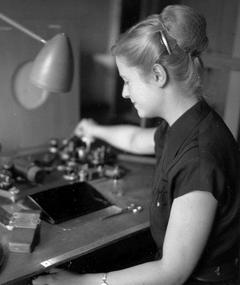 The only record of Claudine Bouché’s work with Jean Rouch was as the editor, in 1964, of Les Veuves de quinze ans (one segment of an omnibus film entitled La Fleur de l’âge, co-directed with Michel Brault, Hiroshi Teshigahara and Gian Vittorio Baldi).
The only record of Claudine Bouché’s work with Jean Rouch was as the editor, in 1964, of Les Veuves de quinze ans (one segment of an omnibus film entitled La Fleur de l’âge, co-directed with Michel Brault, Hiroshi Teshigahara and Gian Vittorio Baldi).
Bouché has forty-three editing credits and was known for her collaborations with French filmmakers François Truffaut, Michel Boisrond, and François Ozon. Among the many films she edited for Michel Boisrond were La Parisienne and Come Dance with Me!, both starring Brigitte Bardot. Bouché edited six films for Truffaut, first as a co-editor (with Cécile Decugis) on Shoot the Piano Player and then as primary editor of The Army Game, Jules and Jim, Antoine and Colette, The Soft Skin and The Bride Wore Black. After a six-year hiatus, Bouché returned as an editor of Just Jaeckin’s Emmanuelle and four films by François Leterrier (Les Babas cool, Le Voleur d’enfants, Le Garde du corps and Tranches de vie). She also did uncredited work on Peter Sellers’ final film, The Fiendish Plot of Dr. Fu Manchu and co-edited Beethoven’s Nephew for Paul Morrissey. In her work with François Ozon, Bouché co-edited Criminal Lovers with Dominique Petrot and co-edited Water Drops on Burning Rocks with Laurence Bawedin, after which she retired from editing…at the age of 75.
In 1977, Bouché was included in the list of “Top 75 Editors” chosen by over 100 editors and directors for Film Comment Magazine.
FRANÇOISE COLLIN
Dates unknown
Chronique d’un été—Chronicle of a Summer (co-editor) (1960)
Françoise Collin (*), with thirty-two editing credits, is featured on her own page on the website, so you can find further information about her here. In addition to being a co-editor of one of the most studied and celebrated films by Rouch and co-director Edgar Morin, she edited five films for Godard (Band of Outsiders, Pierrot le Fou, A Married Woman, Made in U.S.A, and Two or Three Things I Know About Her) and three for Philippe Garrel (The Regular Lovers, Wild Innocence, and Night Wind).
(*) Her last name is spelled with two LL’s. Sometimes it appears with one L online, or even in an onscreen editing credit, as can be seen on the screen credits page.
CATHERINE DOURGNON
Dates unknown
Moi, un Noir—Me, A Black Man (1958) (co-editor)
The only information available about Dourgnon are the few website listings about films she edited. There are no birth or death dates to be found, and her editing work only spans the years 1958-1966. Apparently, her only work with Rouch was as a co-editor, or more likely as assistant editor, to Marie-Josephe Yoyotte on Moi, un noir in 1958.
Dourgnon worked with Joris Ivens on two films: Rotterdam-Europoort was co-edited with Andrée Choty and Geneviève Louveau, and Le ciel – La terre was co-edited with Françoise Beloux. The other films on which she has editing credits are Le Sixième Sens by Martin-Pierre Hubrecht, Nicolette et les Faust by Alain Jeannel, Le Vivarium by Gérald Calderon, and she co-edited Sylvain Dhomme’s Fréjus retrouvé with Néna Baratier.
FRANCINE GRUBERT
Dates unknown
La Pyramide humaine—The Human Pyramid (1961) (co-editor)
Francine Grubert’s sole work with Rouch appears to be as a co-editor on La Pyramide Humaine, but she has twenty-three editing credits spanning a period from 1955-1972. Grubert was the editor of Float Like a Butterfly, Sting Like a Bee, William Klein’s film about Muhammad Ali. She also edited two films by Paul Paviot (Django Reinhardt and In the Park) and was the editor of Jacqueline Audry’s final film, Bitter Fruit. In addition, Grubert edited numerous episodes of three TV shows, including five episodes of Polizeifunk ruft, four of Arsène Lupin and three of Schulmeister, espion de l’empereur.
LILIANE KORB
Born 1940
La Pyramide humaine—The Human Pyramid (1961) (co-editor
Jaguar (1968) (co-editor)
 Liliane Korb worked as an editor from 1960-1970. In addition to being a co-editor on two films for Rouch (La Pyramide Humaine and Jaguar) she was an assistant editor on Peter Brook’s Lord of the Flies and the editor of Melvin Van Peebles’ Story of a Three-Day Pass and François Reichenbach’s Un Coeur gros comme ça.
Liliane Korb worked as an editor from 1960-1970. In addition to being a co-editor on two films for Rouch (La Pyramide Humaine and Jaguar) she was an assistant editor on Peter Brook’s Lord of the Flies and the editor of Melvin Van Peebles’ Story of a Three-Day Pass and François Reichenbach’s Un Coeur gros comme ça.
Working under the pseudonym Lulu Brick, she edited two films for Jean-Pierre Bastid (Salut les copines and Massacre pour une orgie).
Korb and her sister Laurence Lefèvre are both booksellers on the banks of the Seine in Paris. Since 2003 they have jointly written twelve volumes of the popular “Victor Legris” series of crime novels under the pseudonym “Claude Izner.” Their character, Legris, is a bookseller in late 19th-century Paris who is also an amateur detective.
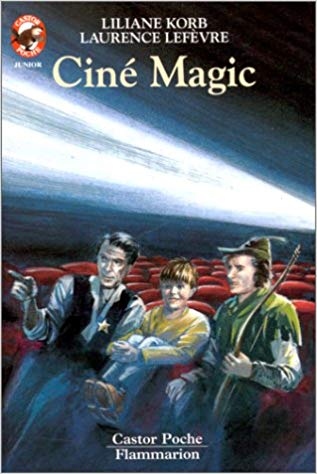 “Claude Izner” has also written Ciné Magic, a children’s book about film.
“Claude Izner” has also written Ciné Magic, a children’s book about film.
CHRISTINE LEFORT
Dates unknown
Cocorico! Monsieur Poulet—Cock-a-Doodle-Doo, Mr. Chicken (1974)
Babatu, les trois conseils—Babatu and Three Wise Counsels (1977)
Rouch made several “ethnofiction” films in addition to his ethnographic films, and Christine Lefort was the editor of two of them, Cocorico! Monsieur Poulet and Babatu, les trois conseils. There is no additional information available about Lefort’s editing work or about any other work history.
RENÉE LICHTIG
1921—2007
Bataille sur le grand fleuve—Battle on the Great River (1952)
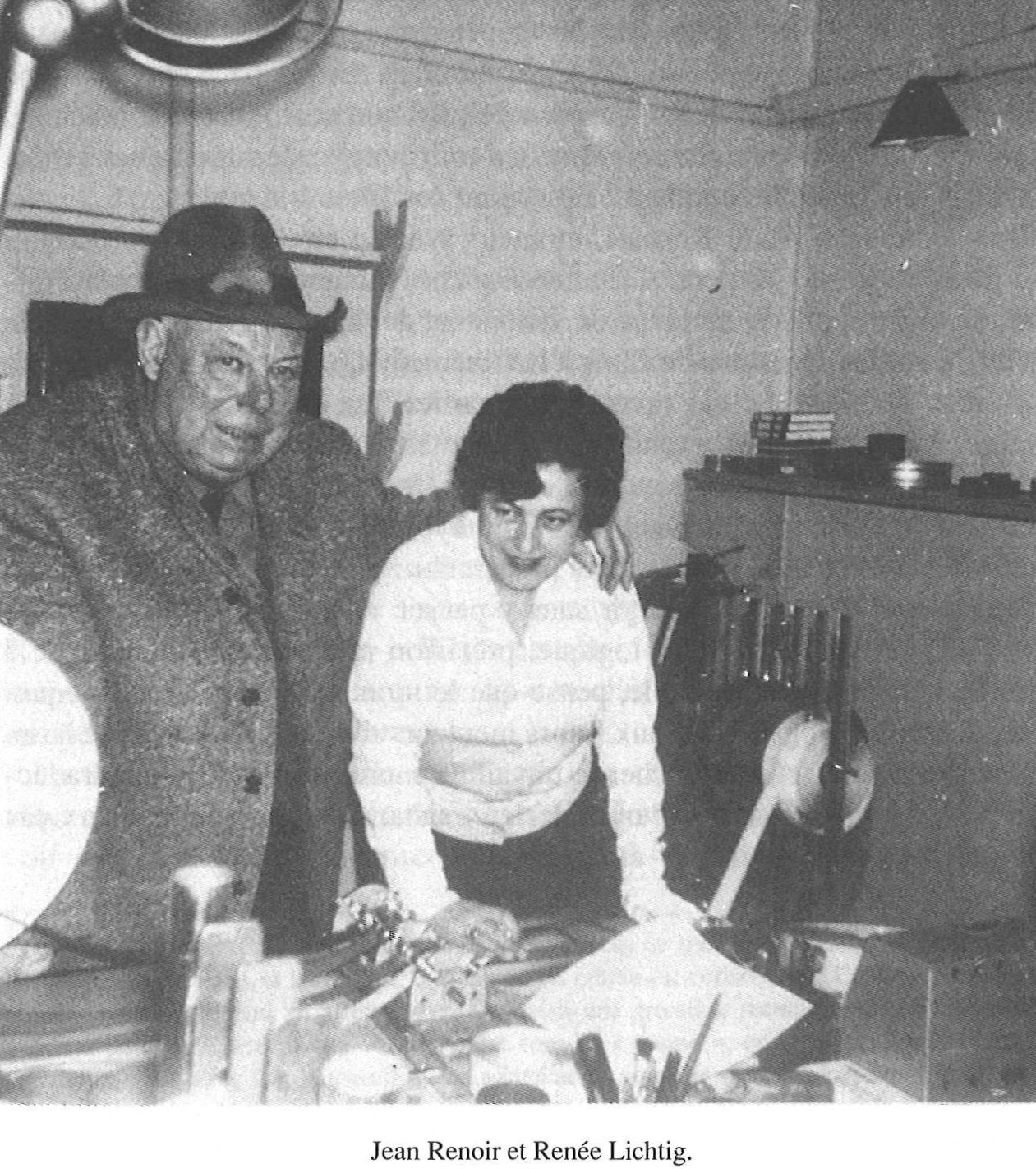 Renée Lichtig was born in Shanghai where her father, Arnold, bought her a Pathé-Baby projector and introduced her to prints of Charlie Chaplin films. When the family returned to France, her father worked on Gaumont newsreels with pioneering female director Germaine Dulac. When Lichtig was ten, her father died from third degree burns suffered when a fire broke out in an editing room.
Renée Lichtig was born in Shanghai where her father, Arnold, bought her a Pathé-Baby projector and introduced her to prints of Charlie Chaplin films. When the family returned to France, her father worked on Gaumont newsreels with pioneering female director Germaine Dulac. When Lichtig was ten, her father died from third degree burns suffered when a fire broke out in an editing room.
Unable to join the ranks of women directors, Lichtig turned to film editing and also became France’s first female timer. She only edited one film for Rouch, Bataille sur le grand fleuve in 1952, but her work with him at the Musée de l’Homme helped forge a lifelong connection with the Cinémathèque Française (*).
In the wake of Lotte Eisner, Mary Meerson and Marie Epstein, Lichtig was the last surviving close female collaborator of Cinémathèque Française founder Henri Langlois, and she arranged for Langlois to have weekend access to the commercial editing rooms where she worked during the week.
Lichtig was extremely active in the Cinémathèque’s restoration department for years following Langlois’ death in 1977, conserving and restoring hundreds of films between 1978 and 1993. She was instrumental in restoring Alexandre Volkov’s Casanova, and Lichtig and Eric von Stroheim completed the gargantuan task of synchronizing the director’s silent film, The Wedding March, to recordings made in 1927.
 Lichtig edited Renoir’s last three films: Le Déjeuner sur l’herbe, Le Testament du docteur Cordelier and Le Caporal épinglé, and she oversaw the 1958 version of Renoir’s La grande illusion. Lichtig’s reworking of the initial restoration of Jean Epstein’s Coeur fidele inspired Epstein’s sister Marie, a filmmaking pioneer in her own right, to say “Renee doesn’t restore films — she resuscitates them.” Because of strict French laws about retirement age, Lichtig was forced to leave the Cinémathèque in 1993 but she was an honorary member for life of the board of directors.
Lichtig edited Renoir’s last three films: Le Déjeuner sur l’herbe, Le Testament du docteur Cordelier and Le Caporal épinglé, and she oversaw the 1958 version of Renoir’s La grande illusion. Lichtig’s reworking of the initial restoration of Jean Epstein’s Coeur fidele inspired Epstein’s sister Marie, a filmmaking pioneer in her own right, to say “Renee doesn’t restore films — she resuscitates them.” Because of strict French laws about retirement age, Lichtig was forced to leave the Cinémathèque in 1993 but she was an honorary member for life of the board of directors.
In 2003, Lichtig received the prestigious Jean Mitry award, given to “personalities or institutions that have distinguished themselves in the work of recovery and enhancement of the silent film heritage.”
(*) The Musée de l’Homme was founded in 1938 by Marcel Griaule and others. They built a movie theater within it, and this is where Rouch started seeing ethnographic films. He continued his association with it throughout his life. In the same year, Henri Langlois founded the Cinémathèque Française and, at the invitation of the museum’s president, Paul Rivet, it was housed at the Musée de l’Homme.
JOSÉE MATARASSO
Dates unknown
La Chasse au lion à l’arc—The Lion Hunters (1965)
Jaguar (1968) (co-editor)
Petit à Petit—Little by Little (the long version) (1971)
Josée (*) Matarasso edited three films for Rouch which are among his most well-known: The Lion Hunters (assisted by Dov Hoenig), Jaguar (co-edited with Liliane Korb and Jeanne-Pierre Lacam), and the long version of Little by Little (assisted by Dominique Villain, who later edited the short version).
The only other existing records of editing work by Matarasso was as co-editor, with Léonide Azar, of Broadway by Light, a 1957 short film by William Klein and as editor of two films produced by UNESCO, Return to Florence (1968) and Fragile est notre monde (1971).
(*) Her name is sometimes misspelled online as José. Maybe people find it hard to think of a woman editing these films?
“To cut with Jean Rouch…is to improvise at the editing table, to collaborate 100% freely, quite outside the normal limits, following the often Surrealist lines of his thinking, ‘to enter into a film through emotion.’ You have to learn to feel for the shape of the sound, for the remark of one character that will set off the following shot.”
—From “Le montage: concerto à deux regards et quatre mains” by Dominique Villain, in which she’s quoting from a text by Danièle Tessier (see below). The entire text can be found in the Appendix.
JACKIE RAYNAL
Born 1940
Gare du Nord (1966)
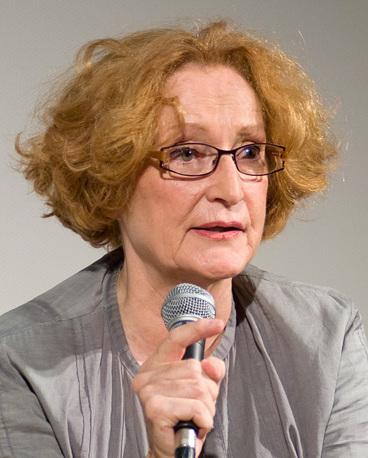 Jackie (sometimes listed as Jacqueline) Raynal is an actress, filmmaker and editor. The only film she edited for Rouch was Gare du Nord, one of the six segments in the omnibus film Paris vu par. The other segments were directed by Chabrol, Douchet, Godard, Pollet and Rohmer.
Jackie (sometimes listed as Jacqueline) Raynal is an actress, filmmaker and editor. The only film she edited for Rouch was Gare du Nord, one of the six segments in the omnibus film Paris vu par. The other segments were directed by Chabrol, Douchet, Godard, Pollet and Rohmer.
Raynal has seventeen editing credits and is known especially for her work with Éric Rohmer, for whom she edited several films, including La Collectionneuse, Nadja à Paris, La Boulangère de Monceau and Une Étudiante d’aujourd’hui. Her other editing work includes La Concentration by Philippe Garrel and Free Radicals: A History of Experimental Film by Pip Chodorov (co-edited with Nicolas Sarkissian.
As an actress, Raynal also has seventeen credits, appearing in such films as Yvonne Rainer’s The Man Who Envied Women, Ulrike Ottinger’s Freak Orlando and Michel Auder’s A Coupla White Faggots Sitting Around Talking.
Raynal has seven credits as a director and is especially known for Hotel New York (edited by Suzanne Fenn), Deux Fois and Notes on Jonas Mekas.
DANIÈLE TESSIER
Dates unknown
Sortie de novices de Sakpata—The Coming Out of the Sakpata Novices (1963)
Horendi (1972)
Tanda Singui (1972)
Boukouki (1973)
Pam kuso kar—Briser les poteries de Pam—Breaking Pam’s Vases (1974)
Médecines et médecins—Medicines and Medics (1976)
Funérailles à Bongo: Le Vieil Anaï 1848-1971—Funeral at Bongo: Old Anaï: 1848-1971 (1979)
Le Dama d’Ambara—The Dama for Ambara (1980)
Danièle Tessier edited eight films for Rouch including Funérailles à Bongo and Le Dama d’Ambara, which Paul Henley refers to as “the major Dogon films.” She wrote an essay about her experiences with Rouch, “Le montage: concerto à deux regards et quatre mains” (“Editing: Concerto for Two Ways of Seeing and Four Hands”) which appeared in the 1996 anthology Jean Rouch ou le ciné-plaisir by René Prédal.
Her work with Rouch spanned two decades (from 1963-1980). During this time she was also directing her own films, acting, and doing both sound editing and editing on numerous other narrative and documentary films.
In the early 1970’s, Tessier co-directed and edited two documentaries with Jacques Lang (Bravo Zoulou and L’Afrique express). She is credited with the sound editing on two feature length documentaries directed by Mario Ruspoli (Les Inconnus de la terre and Regard sur la folie) and was the editor of Vive la baleine, co-directed by Ruspoli and Chris Marker (who later used footage from one of her films in Sans Soleil.) Tessier also worked with several African directors, editing two feature-length documentaries for Sidney Sokhana (Nationalité immigré and Safrana ou le droit à la parole) and three narrative films: one for Moustapha Allasane (Toula ou Le génie des eaux, co-directed by Anna Soehring) and two for Oumarou Ganda (Saitane and Cabascabo).
“The ‘birth’ is sometimes turbulent, with the film being delivered in the midst of violent arguments; sometimes such a tension reigns that nobody dares enter the edit suite. Confrontation? That’s inevitable, but there are also moments of collusion when ideas burst forth and everything links up clearly.”
—From “Le montage: concerto à deux regards et quatre mains”. The entire text can be found in the Appendix.
ANNIE TRESGOT
Born 1937
La Punition—The Punishment (1962)
La Goumbé des jeunes noceurs—The Young Revellers’ Goumbé (1965)
Fêtes de l’indépendence du Niger— Celebrations of the Independence of Niger (1962) (co-editor)
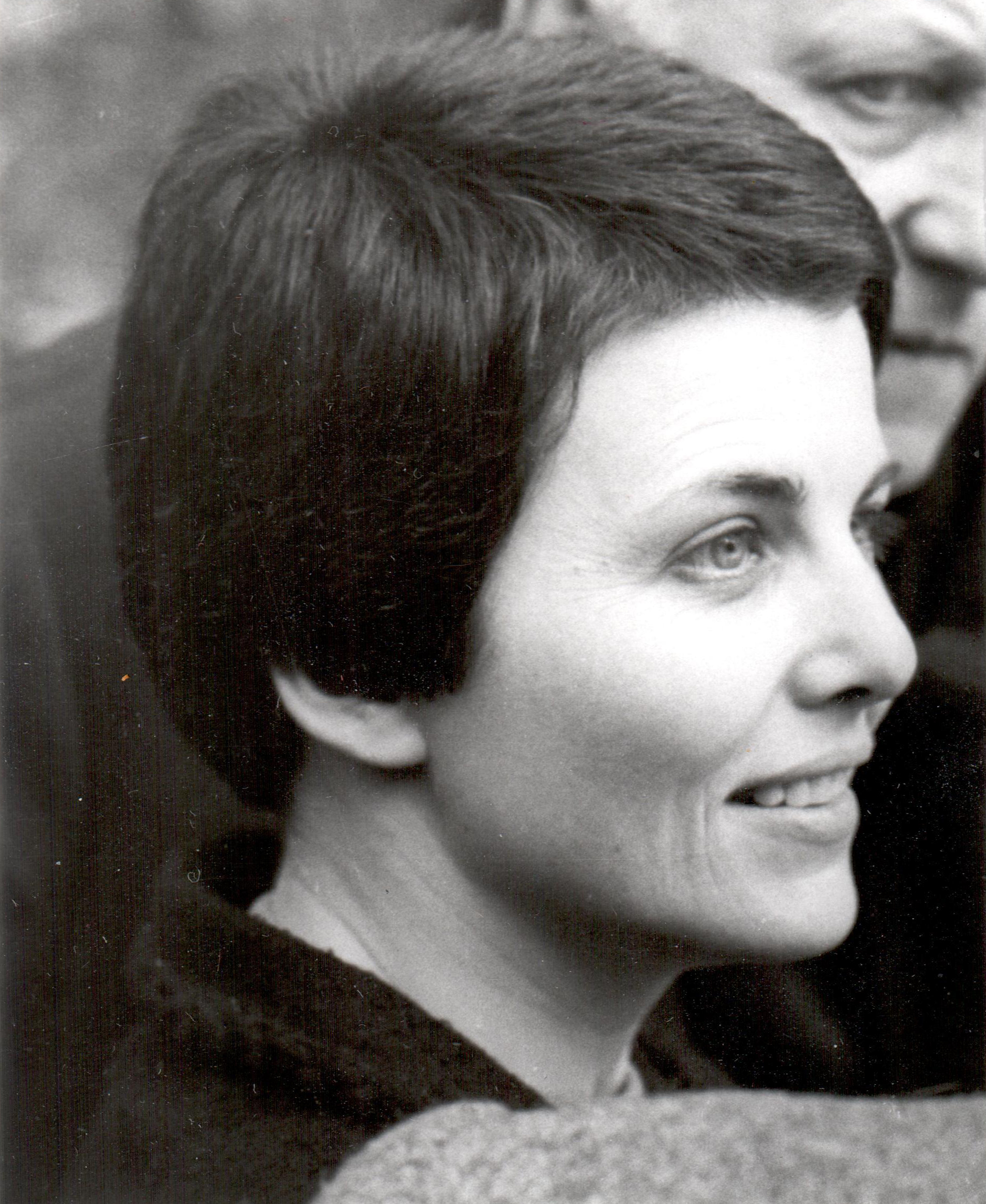 Annie Tresgot began her film work in the late 1950s when she directed her first short film, Fabliau. During the 1960s she worked primarily as an editor. In addition to the three films for Rouch, Tresgot edited Les Enfants de Néant for Michel Brault and two other short films. According to Henley, “she had evidently started working with Rouch some years beforehand since Claude Jutra describes her as working with him in the famously small cutting room of the Musée de l’Homme in 1961.”
Annie Tresgot began her film work in the late 1950s when she directed her first short film, Fabliau. During the 1960s she worked primarily as an editor. In addition to the three films for Rouch, Tresgot edited Les Enfants de Néant for Michel Brault and two other short films. According to Henley, “she had evidently started working with Rouch some years beforehand since Claude Jutra describes her as working with him in the famously small cutting room of the Musée de l’Homme in 1961.”
In the following decades, she has worked exclusively as a writer and director. Tresgot has eight directing credits, four of which are feature-length documentaries. El Ghorba was made in 1971, and the other three in the 1980’s (Elia Kazan Outsider; Portrait of a “60% Perfect Man”: Billy Wilder and Hello Actors Studio). Her short film L’Ange de l’abîme from 1982 was nominated for a César for Best Short Documentary.
DOMINIQUE VILLAIN
Born 1948
Petit à Petit—Little by Little (the short version) (circa 1969)
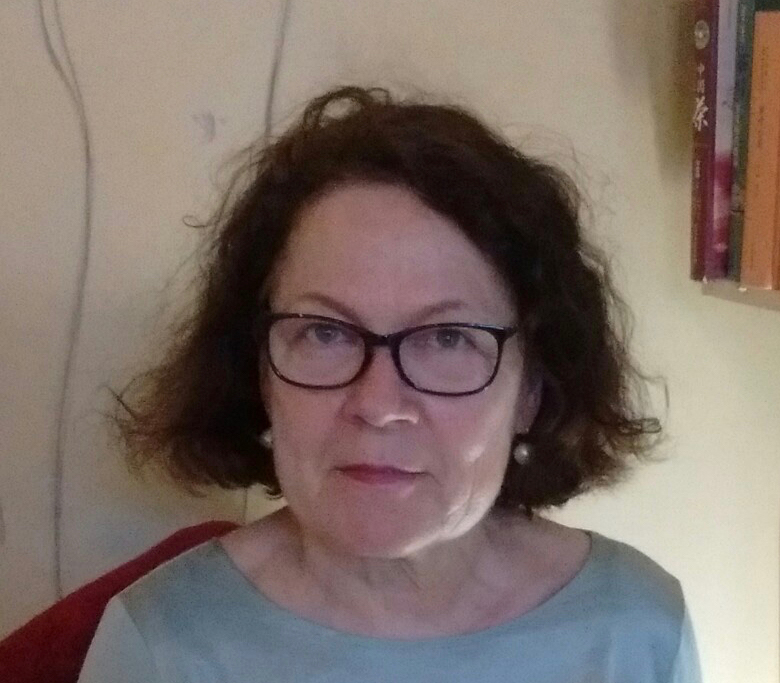 As an editor, Dominique Villain has very few credits. Her work with Rouch consisted of editing the short version of Petit à petit. She was the co-editor (with Lise Beaulieu) of a feature-length documentary, Les Deux Marseillaises, directed by Jean-Louis Comolli and André S. Labarthe, and she edited a few other short films.
As an editor, Dominique Villain has very few credits. Her work with Rouch consisted of editing the short version of Petit à petit. She was the co-editor (with Lise Beaulieu) of a feature-length documentary, Les Deux Marseillaises, directed by Jean-Louis Comolli and André S. Labarthe, and she edited a few other short films.
As a director, Villain was one of five co-directors of a feature-length documentary, L’Olivier; as an actress, she appeared in a short film by Danièle Huillet and Jean-Marie Straub (Toute révolution est un coup de dés/Every Revolution Is a Throw of the Dice).
It is as a writer and teacher that Villain’s knowledge of editing (and cinema in general) has had a great impact. She is the author of five books about cinema. Two were published by Cahiers du Cinéma: the first one in 1984 (Le Cadrage au cinéma: LOeil à la caméra) and the second in 1991 (Le Montage au cinéma). Two decades later, she wrote three volumes of Le travail du cinéma, with one appearing each year from 2012-2014, and in 2016 she published Faire des films.
Villain has also been a teacher of editing and of film aesthetics for many years at the Université Paris 8 Vincennes à Saint-Denis.
MARIE-JOSÈPHE YOYOTTE
1929 – 2017
Moi, un Noir—Me, a Black Man (1958) (co-editor)
La Pyramide humaine—The Human Pyramid (1961) (co-editor)
Portrait de Raymond Depardon (1983)
Dionysos (1984)
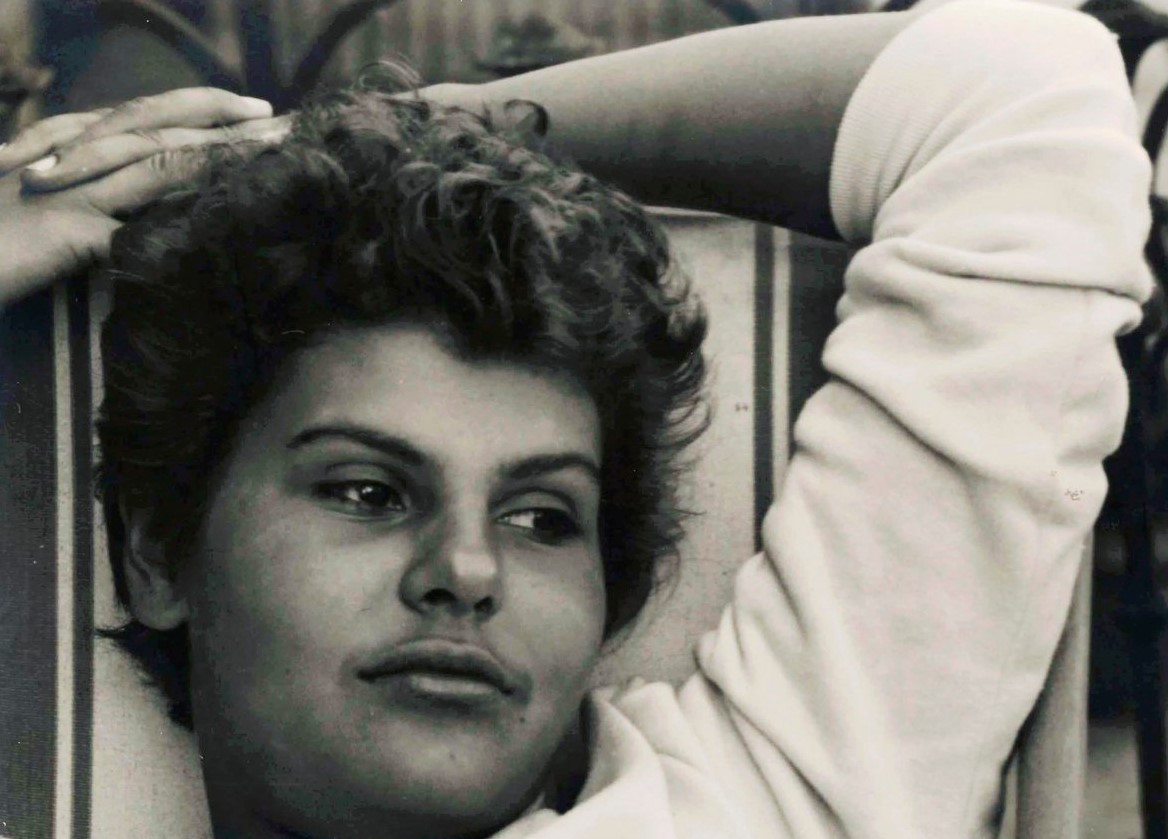 Marie-Josèphe Yoyotte is featured on her own page on the website, so you can find further information about her here. Yoyotte was the first black woman editor in French cinema. She has seventy-four editing credits and has won the César Award three times. In addition to the four films she edited for Rouch, Yoyotte was the editor of Francois Truffaut’s The 400 Blows, Jean Cocteau’s The Testament of Orpheus, and three Euzhan Palcy films (Sugar Cane Alley, La Rue Cases-Nègres and Siméon.)
Marie-Josèphe Yoyotte is featured on her own page on the website, so you can find further information about her here. Yoyotte was the first black woman editor in French cinema. She has seventy-four editing credits and has won the César Award three times. In addition to the four films she edited for Rouch, Yoyotte was the editor of Francois Truffaut’s The 400 Blows, Jean Cocteau’s The Testament of Orpheus, and three Euzhan Palcy films (Sugar Cane Alley, La Rue Cases-Nègres and Siméon.)
And now, if you would like to see their names up on the big screen, please visit the next page….

